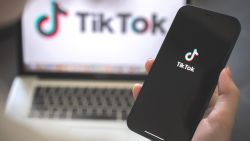New US measures that restrict exports to Huawei could cost Silicon Valley billions in lost revenue.
The world’s biggest telecommunications equipment supplier and No. 2 smartphone seller relies on dozens of American tech companies for key components.
China’s Huawei bought $70 billion worth of components and parts last year from 13,000 suppliers. Of that, about $11 billion was spent on products from dozens of US businesses, including computer chips from Qualcomm (QCOM) and Broadcom (AVGO), as well as Microsoft (MSFT) software and Google (GOOGL)’s Android.
That revenue is now threatened by the Trump administration’s decision to place Huawei on a list of foreign firms barred from receiving components from US exporters without a license.
The blacklisting of Huawei puts at risk “both the company itself and the networks of Huawei customers around the world, as the firm would be unable to upgrade software and conduct routine maintenance and hardware replacement,” analysts from Eurasia Group said in a note.
Huawei smartphone users, for example, may not be able to update the Android operating system on their devices because Huawei “does not appear to have a ready alternative,” they added.
Changing suppliers
The White House ban also disrupts the global supply chain, because foreign companies can’t sell products containing US parts and components to Huawei either, according to Lawrence Ward, a partner at international law firm Dorsey & Whitney.
That means Huawei won’t be able to buy, for example, chipsets from a Taiwanese supplier if those chipsets contain any US parts or components.
Huawei says it has spent years preparing for the current scenario.
“This decision is the latest move in the campaign against Huawei, waged by the US government for political reasons,” Huawei’s rotating chairman Ken Hu wrote in a memo to employees shared with CNN Business on Friday.
“The company has known this could be a possibility for many years,” he said. “We have invested heavily and made full preparations in a variety of areas.”
‘Insane decision’
Huawei’s chip designsubsidiary also said it had been preparing for this “extreme situation for survival.”
In an internal memo seen by CNN Business, HiSilicon chief He Tingbo said the company had assumed that “one day, all advanced chips and technologies in the US will not be available.”
To ensure Huawei could continue to serve customers, HiSilicon created “spare tires” so the company would survive, she said.
The United States has “made the most insane decision and put Huawei into the [controlled export list],” she wrote. “Today, as history has made the choice, the spare tires we built have turned in to ‘Plan A’ overnight.”
Still, brokerage firm Jefferies said it would be difficult for Huawei to withstand being cut off from US suppliers for long.
American firms dominate when it comes to software for smartphone and telecommunications equipment, Jefferies analyst Rex Wu said in a note. Huawei also lacks alternatives to American computer chips for telecoms base stations, he added.
That means that even though Huawei is a leader in 5G technology, the products associated with the next generation of ultra-fast wireless networks still need US parts.
Huawei has signed dozens of commercial 5G contracts around the world, including 25 in Europe and 10 in the Middle East. It could be harder to fulfill those contracts if Huawei can’t get software or computer chips from US suppliers.
This week’s escalation of the US campaign against Huawei has rattled investors.
Shares in Qualcomm, whose sales to Huawei account for less than 10% of its revenue, closed down 4% on Thursday in New York. Huawei sales make up 15% of optical maker Lumentum (LITE)’s revenue. Its stock plummeted nearly 12%.
Shares in other US chipmakers that supply to Huawei — including Qorvo (QRVO), Skyworks Solutions (SWKS), and Xilinx (XLNX) — also ended the day in the red.
Shannon Liao and Serenitie Wang contributed to this article.



























